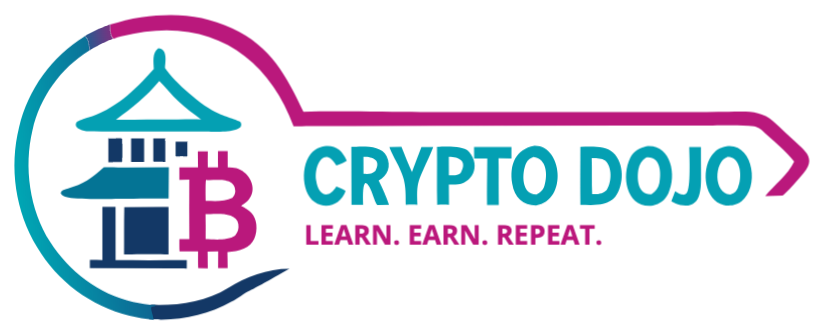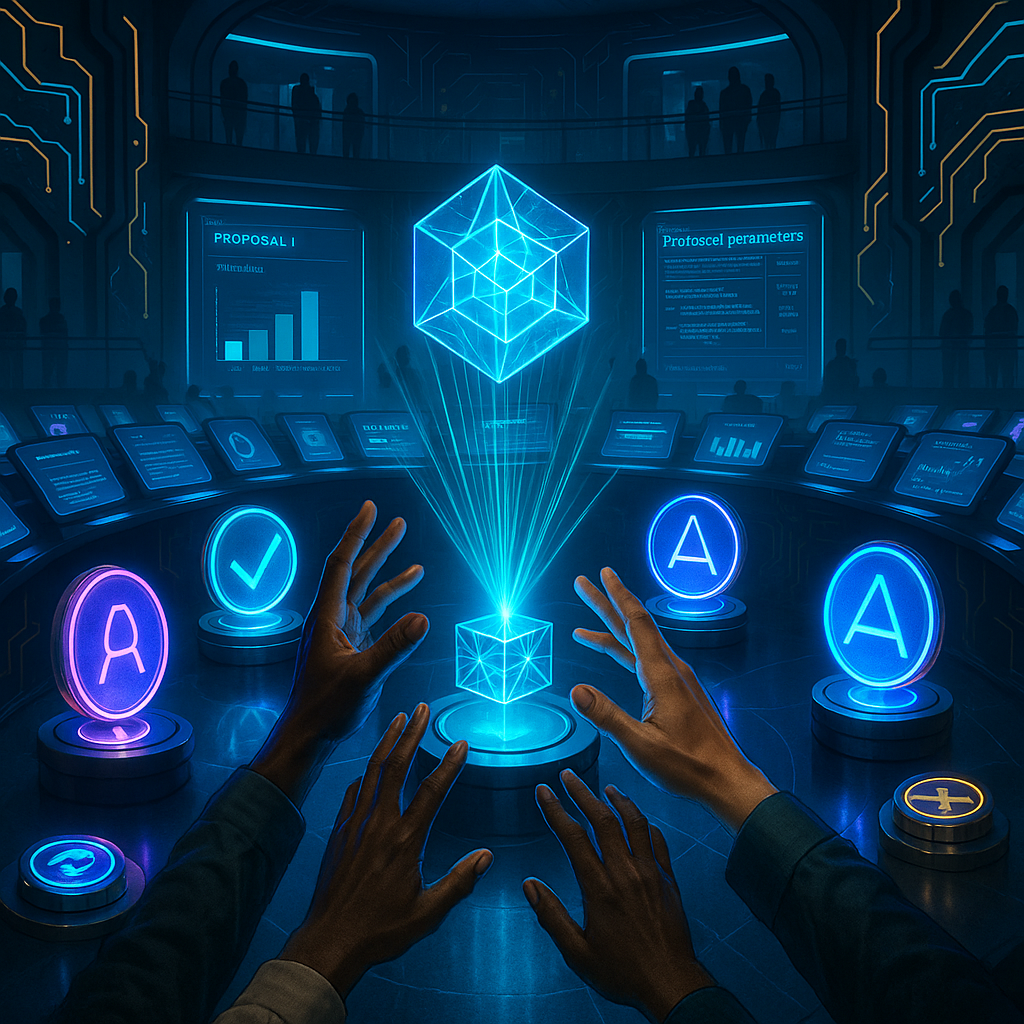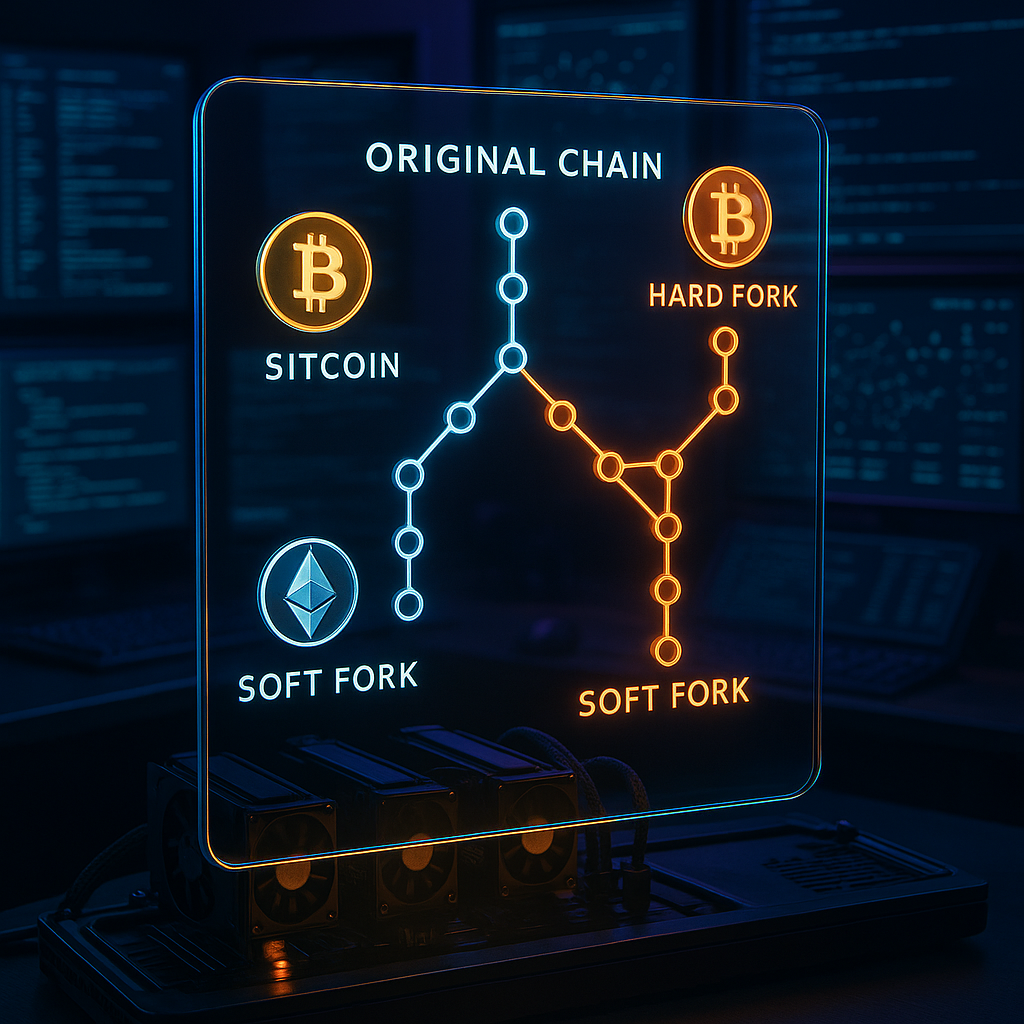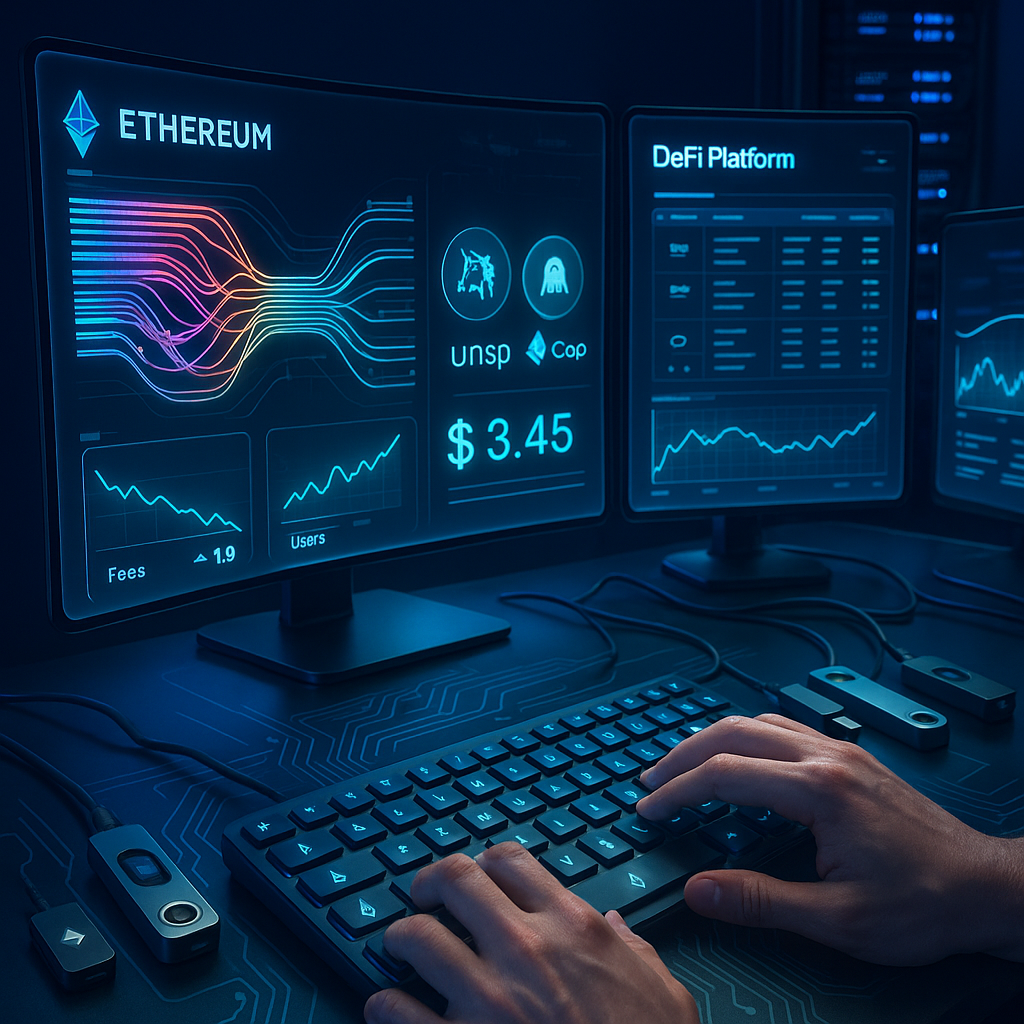Key Takeaways
- Shape the future of DeFi with your voice and vote. Governance tokens give holders the ability to propose and vote on protocol changes, upgrades, and other key decisions. This transforms ordinary users into active stewards, empowering them to influence the direction and evolution of their favorite projects.
- Enhance security through community-driven decisions. By spreading authority across a diverse user base, decentralized voting reduces the risk of single points of failure and curbs the potential for hacks or rogue operators. Community oversight helps strengthen protocol integrity.
- Drive upgrades and fuel ongoing innovation. Community-led votes allow DeFi protocols to evolve, adapt, and stay competitive without waiting for central approval. This ensures that changes reflect the true needs and preferences of users across industries, whether in finance, gaming, supply chain management, or energy markets.
- Earn rewards and exclusive benefits through participation. Many protocols incentivize active involvement with rewards ranging from yield enhancements to access to special features, community grants, or early product releases. This cultivates deeper engagement and loyalty among stakeholders.
- Promote transparency and accountability at every step. Public, on-chain voting and accessible proposal histories let anyone trace and verify decisions. This openness not only increases trust but also reduces the possibility of hidden manipulation or behind-the-scenes control.
- Build resilient, genuinely user-driven ecosystems. By aligning power and incentives with those most invested in the protocol’s success, governance tokens help nurture adaptable, sustainable communities that can weather changing markets and technological trends.
Grasping DeFi governance tokens is more than just understanding a technical tool. It is the key to empowering yourself within the decentralized economy. In the following sections, you’ll learn how DeFi governance works, how you can participate, and the unique opportunities and challenges that come with engaging in this new era of digital finance.
Introduction
Imagine a world where your vote not only matters, but directly shapes the security, rules, and direction of digital financial systems you use every day. This is the opportunity DeFi governance tokens unlock. Rather than leaving critical decisions behind closed doors, these tokens put power in the hands of communities, fostering transparency, accountability, and a shared sense of ownership.
By learning how DeFi governance operates, newcomers can move beyond the basics to gain meaningful influence. You’ll not only demystify the mechanics but also discover how to contribute to protocol upgrades, engage in risk management, and potentially earn rewards. Let’s explore how governance tokens democratize control in DeFi and why mastering them is essential for anyone serious about participating in the future of digital assets.
Understanding Governance Tokens
What Are Governance Tokens?
Governance tokens are digital assets that grant holders the right to participate in steering the development and operation of decentralized protocols. Unlike traditional stocks or voting shares, these tokens unlock direct, transparent influence in digital communities, allowing users to propose ideas, cast votes on upgrades, and approve protocol-level changes.
Stay Sharp. Stay Ahead.
Join our Telegram Group for exclusive content, real insights,
engage with us and other members and get access to
insider updates, early news and top insights.
 Join the Group
Join the Group
Key characteristics of governance tokens:
- Voting rights are often proportional to the amount held.
- Holders can submit and sponsor new proposals.
- Token owners may influence core protocol variables such as fees, payout schedules, and partnership criteria.
- Some tokens offer revenue-sharing or yields as added incentives.
- Tokens are usually transferable and tradeable across decentralized and centralized exchanges.
A prominent example is Uniswap’s UNI token, which lets holders decide how fees are structured, where treasury funds go, and which features get prioritized, all without a command-and-control hierarchy.
Core Functions and Use Cases
The utility of governance tokens goes well beyond granting a vote. In leading DeFi protocols, they power robust systems for collective bargaining, funding, and strategic alignment. Across sectors, these tokens anchor a shift toward community-driven ecosystems.
1. Protocol Parameter Adjustment
Governance tokens let communities fine-tune operational factors:
- Adjusting interest rates in lending platforms or insurance pools.
- Updating fee structures based on market dynamics.
- Calibrating risk parameters in asset management or derivatives protocols.
- Configuring liquidity pools to optimize usage.
2. Resource Allocation
Token-based governance enables strategic decisions on:
- Distributing community and treasury funds, such as grants for developer incentives or onboarding campaigns.
- Sharing protocol revenues with stakeholders.
- Deciding on funding for ecosystem integrations or collaborations.
- Prioritizing research and security audits in DeFi, healthcare data platforms, or digital identity projects.
3. Strategic Direction
Communities can use governance tokens to shape broader initiatives:
- Launching partnerships (with payment networks, educational platforms, or IoT projects).
- Approving major upgrades or migrations to new blockchains.
- Coordinating emergency responses, such as bug bounties or rapid patch deployment.
- Adapting to regulatory changes in legal, compliance, or cross-border finance environments.
For instance, holders of the COMP token can adjust borrowing rates within the Compound protocol, dynamically tuning the system to better serve both lenders and borrowers as market conditions evolve.
DeFi Governance Mechanisms
Voting Systems and Models
Decentralized protocols rely on multiple voting models to promote inclusivity, fairness, and security, each tailored to different risk profiles and participation goals. These models can be compared or combined to meet the unique demands of various projects, from DeFi platforms and NFT marketplaces to decentralized autonomous organizations (DAOs) in education or environmental science.
Popular governance models:
- Token-weighted voting: Each token equates to one vote, incentivizing investment but sometimes concentrating power among large holders.
- Quadratic voting: Vote influence grows with the square root of tokens staked, moderating the impact of whales and encouraging distributed participation in, for example, climate finance DAOs or digital creator cooperatives.
- Delegation systems: Token holders entrust their voting rights to representatives or experts, driving participation in technically complex proposals (such as network upgrades in supply chain management platforms).
- Time-locked voting: Voting power increases the longer tokens are staked, rewarding committed parties and discouraging speculative swings.
- Snapshot voting: Votes are counted at predetermined intervals, reducing manipulation and enabling swift decision-making.
Aave offers a robust illustration, blending thresholds for proposal creation with two-step voting to ensure that only serious and qualified proposals advance. This upholds both innovation and protocol safety.
Proposal Life Cycle
From initial idea to executed protocol change, the proposal process in DeFi governance helps safeguard integrity and align incentives. Knowing this lifecycle is vital across all domains, be it healthcare DAOs managing community health data, financial co-ops distributing grants, or energy collectives coordinating green initiatives.
The governance proposal journey:
- Discussion Phase
- The community debates ideas in forums, social channels, or feedback sessions.
- Feasibility and impact are analyzed by technical and economic contributors.
- Risks, costs, and alignment with mission values are weighed.
- Proposal Submission
- Formal requirements are met, including technical documentation and security assessments.
- Clear specifications are published and open for review.
- Implementation plans are vetted for timelines and resource needs.
- Voting Period
- Token holders vote, often within a set window.
- Minimum participation (quorum) thresholds are enforced to prevent manipulation.
- Results are transparently tallied and published.
- Implementation
- Approved proposals are technically deployed, frequently through automated “smart contracts.”
- Communication keeps stakeholders informed on changes.
- Ongoing monitoring and community feedback ensure adaptability.
Community scrutiny and technical validation before a line of code is changed is exemplified by MakerDAO, requiring ideas to endure both before implementation.
Power Dynamics and Participation
Token Distribution and Voting Power
How governance tokens are issued and distributed is crucial for decentralization and fairness. Protocols consciously design distribution models to amplify diverse voices and anchor long-term alignment, whether in decentralized savings pools, blockchain-based education grants, or collaborative research funding.
Essential distribution mechanisms:
- Wide initial distributions (via airdrops, liquidity mining, or merit-based grants), promoting community inclusiveness.
- Vesting schedules that encourage holders to remain active, discouraging early sell-offs or speculative attacks.
- Delegation features that allow less-technical users to entrust their votes to informed representatives.
- Limits on voting power concentration to stifle dominance by a handful of actors.
Curve Finance has advanced this further by introducing vote-escrowed systems like veCRV, empowering committed users with extra clout and marginalizing manipulative short-term speculation.
Stay Sharp. Stay Ahead.
Join our Telegram Group for exclusive content, real insights,
engage with us and other members and get access to
insider updates, early news and top insights.
 Join the Group
Join the Group
Governance Participation Challenges
Beyond the ideals, real-world participation in DeFi governance faces obstacles echoed across digital and traditional communities alike.
Common hurdles include:
- Technical barriers: Navigating interfaces, wallets, and cryptographic tools can deter new participants, whether in DeFi or community-driven medical research DAOs.
- Voter apathy: Low turnout can hinder meaningful change and create governance deadlocks, a challenge in both online cooperatives and decentralized insurance platforms.
- Complexity of proposals: Highly technical or jargon-laden proposals intimidate or exclude everyday users.
- Coordination costs: Large, distributed groups struggle to reach consensus efficiently, as seen in decentralized environmental monitoring organizations.
- Susceptibility to attacks: Exploits like vote buying or manipulation can undermine outcomes.
Projects such as Balancer have responded with cleaner interfaces, step-by-step educational tutorials, and community ambassadors to bridge the gap, making governance approachable in fields far beyond finance.
Best Practices and Future Trends
Effective Governance Strategies
Leading DeFi protocols and DAOs across sectors preserve a set of best practices that improve stability, inclusivity, and adaptability. The lessons are broadly applicable to any collaborative system built on shared ownership and open participation.
Best practice highlights:
- Publish thorough, accessible documentation outlining governance rules and proposal standards.
- Create visible, open channels for discussion and feedback, building trust through dialogue.
- Offer clear incentives, such as rewards programs or exclusive access, to keep participation high.
- Apply strong security reviews and transparent vote auditing to prevent abuse.
- Enable regular, well-publicized cycles for decision-making to maintain momentum.
Uniswap’s ongoing evolution is a model of methodical community involvement, where each change is debated, refined, and transparently executed with full buy-in from stakeholders.
Emerging Governance Innovations
The governance ecosystem is accelerating with cutting-edge developments that are making the process both more resilient and accessible, bridging the worlds of finance, tech, and social enterprise.
On the horizon:
- Optimistic governance models streamline routine decisions while reserving contentious issues for deeper scrutiny, boosting efficiency for DAOs in education and legal compliance.
- Layer 2 voting solutions reduce transaction fees and make participation feasible at scale, vital for large co-ops or gaming metaverses.
- Cross-chain governance frameworks synchronize decisions across multiple blockchains, enabling seamless coordination for global climate impact or smart city initiatives.
- AI-assisted proposal vetting leverages machine learning to summarize, flag risks, and model outcomes for complex proposals, supporting both new and established communities.
- Reputation-based voting solutions weight votes by long-term engagement or merit, fostering healthier debates and stronger decision outcomes.
Protocols experimenting with these hybrid systems are already finding success by combining multiple governance tools to deliver robust, secure, and participatory ecosystems.
Conclusion
Governance tokens are the foundation of truly decentralized, user-driven digital economies. By conferring genuine influence over protocol design, resource allocation, and policy direction, they empower everyday users to steer the evolution of everything from financial platforms and educational DAOs to legal innovation hubs and digital collectives. Achieving the full promise of decentralization, however, requires ongoing attention to equitable distribution, approachable interfaces, and community engagement strategies that lower barriers to entry.
As advanced participation tools like layer 2 voting, cross-chain governance, and AI-guided proposal analysis take hold, DeFi governance is poised to become more inclusive, transparent, and resilient across industries. For those new to crypto or Web3, understanding and engaging with governance tokens is more than foundational. It’s your chance to help write the next chapter of the decentralized economy. The leaders and innovators of tomorrow will not only learn and earn, but also take an active role in shaping the digital landscapes they inhabit. The question is not whether you’ll participate, but how boldly you’ll seize this opportunity to help shape the future.





Leave a Reply